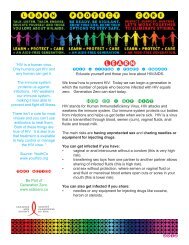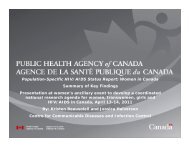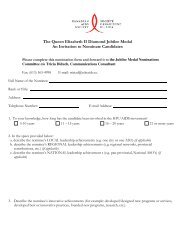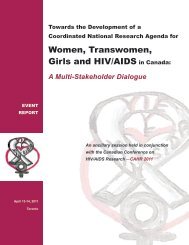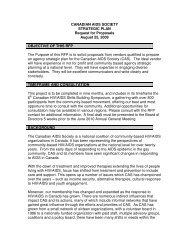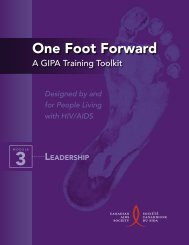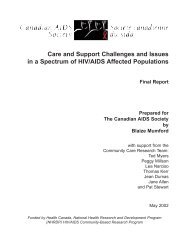Positive Prevention: Common Misconceptions
Positive Prevention: Common Misconceptions
Positive Prevention: Common Misconceptions
Create successful ePaper yourself
Turn your PDF publications into a flip-book with our unique Google optimized e-Paper software.
It’s its own separate programming.<strong>Positive</strong> prevention is not separate from other programs,or a stand-alone initiative. This misconceptionmanifests itself as AIDS service organizationssaying that they need a positive prevention worker.There may still be a need for champions of positiveprevention, and people living with HIV articulatewhat positive prevention means.The components of positive prevention need to beintegrated into all programs responding to peopleliving with HIV. It is the establishment of a new culturalnorm in responding to people living with HIV.It should be integrated into anywhere people livingwith HIV can get programs.This can sometimes be challenging for organizationsthat have both support and prevention activities.There is often a different set of staff and volunteersworking on prevention and support, and they oftenwork with different populations: HIV-positive andHIV-negative.<strong>Positive</strong> prevention requires HIV service organisations,HIV support groups and NGOs to integratepositive prevention with existing HIV programmes.It is important that information and/or supportaround safer sex, re-infections, reproductive choices,the effects of ARV treatment, and safer injectingdrug use is available in all settings. This should includemedical centres, treatment delivery sites, familyplanning clinics, home-based care programmesand community centres.One approach will work for all.Not all people living with HIV are the same. To beeffective, programs must acknowledge the diversityof lived experiences amongst people living withHIV. They should that take into account the needsof people living with HIV who are of different genders,ethnicities, ages and sexual orientations.“Among those who are doing this work, we sometimesbelieve that positive prevention can work forall people living with HIV. I’m not so sure. Becausemost injection drug use and sexual practices aredriven by their respective cultures, these are verypowerful drivers—whether a programmatic responseto a system can be powerful enough to reacheverybody and make a shift in the culture is a bigquestion. There are some pretty strong drivers thatpeople use in their decision-making. Serosortingdidn’t come from prevention programming. Saferbarebacking didn’t come from prevention programs.Eros is ahead of our intellectual bravery.”



